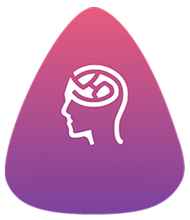Read a viewpoint opposite to yours on service trends—summarize its strongest point in one sentence.
Pause and ask: “What’s another way to see this?” when reacting strongly to a client request.
Choose one habit today to do differently—change the order, method, or tool you normally use.
Read an article from a field outside your own—note one idea you could apply directly to your services.
Challenge your default choice in a low-stakes task—try the opposite to stretch mental flexibility.
Use the phrase “That’s interesting—tell me more” when someone challenges your approach or scope.
Journal about a time rigid thinking limited your advice—what might openness have created instead?
Reflect on your reaction to new methods—do you resist, explore, or experiment with possibilities?
Describe a time you adapted mid-session successfully—what thinking helped you shift perspective?
Write about a belief or assumption you’ve outgrown—what influenced you to change your mind?
List three recent challenges—did you consider multiple angles or get stuck in one approach?
Explore how curiosity shows up in your thinking—when do you ask “what if,” and when do you shut it down?
Present a new idea to your team that challenges the usual way of working—invite discussion, not agreement.
Switch roles in a task or meeting—see it from a colleague’s perspective and adjust your approach.
Do something this week that scares or stretches you intellectually—then reflect on what you learned.
Pick a topic you know well and explain it as if you were a beginner.
Offer a “yes, and” response in disagreement—build on what’s said even if you differ.
Ask your team to challenge your thinking—respond with curiosity and clarifying questions.
Ask someone to point out when you seem closed-minded—what behaviors signal that for them?
Share an example where your mindset shifted recently—ask a peer how they’ve changed perspective.
Ask a colleague for feedback on your flexibility in brainstorming—do you invite or shut down ideas?
Start a conversation with someone outside your circle—ask how they approach change in their role.
Share how you processed a complex decision—invite feedback on where you could have been more open.
Create a “mental blind spots” swap with a peer—name one area you overlook and exchange theirs.
Reframe “That’s not how we do it” as “What if we tried it once, just to learn and adapt?”
Instead of “That won’t work,” ask: “Under what conditions could this actually succeed?”
Recast uncertainty as optionality—more possible paths, not simply more problems.
When stuck, say: “Let’s assume the opposite is true”—see what new ideas emerge.
See conflicting opinions as information, not threat—what variable might they account for?
Reframe mistakes as data points in a learning model—adjust your hypothesis and test again.
Notice when you instantly reject a new idea—what emotion or bias might be driving that reaction?
Track your inner response when challenged—do you feel curious, threatened, or indifferent at first?
Observe how you respond to surprise—freeze, pivot, or adapt—what’s your first instinct?
Watch someone handle rapid change—what thoughts seem to guide their flexible behavior?
Observe meetings where innovation thrives—what mindset traits are visible in those rooms?
Track your language in uncertain moments—do you ask “what if,” or insist “that’s not possible”?


 Give Feedback
Give Feedback
